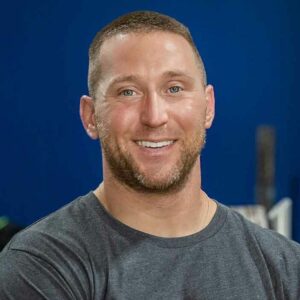There has been so much discussion on the topic of movement quality, biomechanical efficiency, and how to improve in these areas of athletic development. For myself, I believe it’s the most important athletic quality that needs to be assessed, addressed, and corrected to drive the needle forward. It’ a prerequisite before addressing any other athletic factors such as speed, agility, power, acceleration, strength, and conditioning. That is not to say we don’t address all those athletic qualities, we do. We just need to prioritize movement quality above all else because it sets the tone to make improvements in all other areas of athletic development. As always, the primary goal is to mitigate risk, not cause harm to our athletes, and keep them healthy so they can go out and compete when the times comes.
When we discuss movement quality, I believe its important to truly define what that means and the context of the athlete and their goals. Movement quality can have a completely different meaning when we’re approaching how we train a powerlifter compared to working with a baseball player. The powerlifter has completely different goals that the baseball player, as they want to get as strong as possible in the squat, deadlift, and bench press. The baseball player wants to run faster, track down the ball in the gap, throw 90+MPH, and hit the ball over 400 feet, among other things.
The way we approach working with both athletes will be drastically different due to their goals, injury history, training experience, identify “red flags” in their range of motion and movement patterns, etc. That is a conversation and evaluation we need to have with them from the beginning to ensure we can give them the individual attention and personalized programming they need to be successful.
As I mentioned, we need to define movement quality and what it means to the individual athlete and their goals. Continuing with our example, a powerlifter will perform back squats, straight bar deadlifts, and bench presses to drive maximal strength development. If we take the same approach with our baseball players, we could be setting them up for breakdown and/or injury. This comes back to our evaluation process and what we determined to be the proper exercise selection based on their joint positions, range of motion, and movement competency.
If their center of gravity is shifting too far forward because they’re in gross extension where their pelvis is tilted forward (anterior pelvic tilt) and their lower back is shaped like a C curve, then we have some corrections to make before we can progress them to more advanced stages of training. A squat with plate reach will be the appropriate starting progression for them to learn how to shift their center of gravity back and down so they can load into their ankles, knees, and hips effectively without compromising their joint function and integrity. In time, as the progress forward, we can add a more challenging variation and external load to build strength.
This is the importance of understanding the buildup process and the basic principle of progression. It comes down to determining what the appropriate starting progression is for the individual athlete. We need to explain the “why” behind it and we need to show them how we’re going to make gradual progressions with them over time. We cannot just throw a barbell on their back or give them an exercise that is too “advanced” for them without giving them the tools to be successful from the beginning. This plays a big role in getting athlete to “buy in” to the process and understand that it takes time, patience, and consistent effort to progress to more advanced levels of training.
This can be accomplished and it’s essential for long-term development. The last thing we want to do is set them up for failure by giving them exercise progressions that don’t allow them to be successful early on. While is depends on the athlete and how they respond to this, this can only discourage them from a mental perspective. If I ever have any doubt about where to start them, I start with the most basic progression, then go from there and progress in exercise selection when they’ve learned the skill and earn the right to move forward. This can take 2 weeks or 6-8 weeks; it all comes down to the athlete’s ability to learn and master the skill. I don’t seek to master the movement pattern we’re teaching them on the first session. This is a process takes time and gradual improvements can be made session-by-session.
Contact: Kip Steingart, Owner Top Performance Strength
Email: support@topperformancestrength.org
Cell: (847)542-5213
Website: www.topperformancestrength.net


